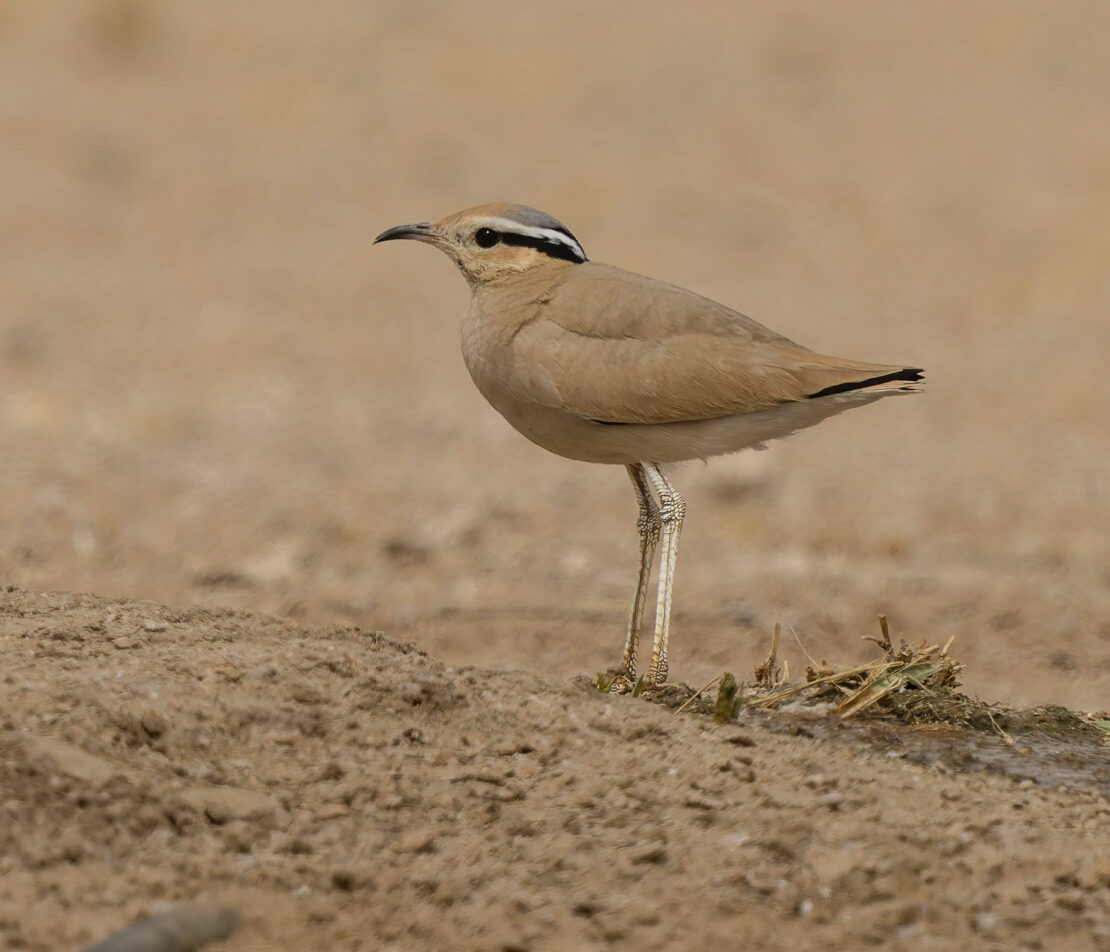Afghanistan – Armenia – Azerbaijan – Bahrain – Cyprus – Egypt – Georgia – Iran – Iraq – Israel – Jordan – Kazakhstan – Kuwait – Kyrgyzstan – Lebanon – Oman – Qatar – Saudi Arabia – South West Russia – Syria – Tajikistan – Türkiye – Turkmenistan – United Arab Emirates – Uzbekistan – Yemen

Capital: Doha
Area: 11,568 km2
BirdLife International partner: None
Total number of bird species: 232 (BirdLife International Data Zone)
Globally threatened bird species: 10
Country endemics: 0
Important bird and biodiversity areas: 5 IBAs with a total area of 151 km2
Rare birds committee: Qatar Bird Records Committee
Specialities:
Ferruginous Duck, Grey Francolin, Black-necked Grebe, Striated Heron, Western Reef Heron, Socotra Cormorant, Crested Honey Buzzard, Crab-plover, Red-Wattled Lapwing, White-tailed Lapwing, Lesser Sand Plover, Sooty Gull, Steppe Gull, Greater Crested Tern, Lesser Crested Tern, Bridled Tern, White-cheeked Tern, Namaqua Dove, Pharaoh Eagle Owl, Lilith Owlet, Indian Roller, Pied Kingfisher, Arabian Green Bee-eater, Alexandrine Parakeet, House Crow, Black-crowned Sparrow-Lark, White-eared Bulbul, Red-vented Bulbul, Clamorous Reed Warbler, Common Myna, Indian Silverbill
ABBA project
The Atlas of the Breeding Birds of Arabia (ABBA) aims to document the distribution of breeding birds in the Arabian Peninsula. The project is run by Mike Jennings and birdwatchers’ field observations are a valuable source of data. For information and notes on reporting, along with breeding record submission forms, please email Mike: mikejennings@arabianbirds.com.
Ornithological interest:
Qatar is situated on a peninsula on the western coast of the Arabian Gulf and its avifauna is, in many ways, similar to that of Kuwait, Bahrain and the UAE. Qatar lacks the large, mountainous inland stretches of the UAE and is not as close to fertile Mesopotamia as Kuwait. However, when compared to Bahrain, Qatar has both a longer coastline and more extensive inland habitats.
The sea along the coast is mostly very shallow, offering opportunities to see terns, gulls, cormorants, egrets, herons, and Ospreys. The coastline is partly rocky but there are also long beaches and tidal mudflats which are particularly attractive to waders. The Shamal coast is a bottleneck for migrants in spring, and in autumn acts a resting place for birds that have crossed the Arabian Gulf. This is a good site to search for Crab-plovers and Cream-coloured Coursers (August and September are best).
Real highlights of the coast are the mangroves which stand out as impressive green jewels against the otherwise stark Qatari landscape. The mangroves along the coastal path east of Shamal often turn up interesting birds including passerines, while the vegetated areas of nearby Shamal Park are always worth visiting.
The desert, with both sandy and rocky areas, is great for larks, wheatears, rock thrushes and shrikes. With some luck you can even spot owls. The chance of seeing a wider variety of species increases considerably wherever there is more vegetation and water. Qatar is dotted with (often artificial) oases made up of little farmsteads, reservoirs and larger pieces of agricultural land.
Urban parks are easily accessible and allow birdwatching without the need for an SUV. The large parks of Doha such as Qatar 02 MIA and Al Bidda attract migrant passerines and surprises can always turn up. Resident species now include populations of escaped birds such as parakeets, mynas, bulbuls and silverbills.
Photography typically requires a permit but birdwatching with binoculars and spotting scopes is usually allowed. In general Qatar is a very safe and rewarding place for birdwatching, particularly for someone wishing to have easy access to the avifauna of the desert and the Gulf.
Best times to visit:
Spring and autumn are when you can see most birds (including resident, migrant and wintering species). If you want to avoid the heat, any time between November and March is usually good but migration starts in late August and movements of birds continue through until early June.
Essential reading:
Porter R & Aspinall S (2010) Birds of the Middle East, Helm.
Al-Sirhan A, Eriksen J, Porter R (2022) Birds of the Middle East, a Photographic Guide, Helm.
Jennings M C (2010) Atlas of the Breeding Birds of Arabia, Fauna of Arabia Volume 25, Karger Libri.
Eriksen H, Eriksen J, Gillespie F (2011) Common Birds of Qatar, Frances Gillespie.
Bashir E A (2015) Field Guide to the Birds of Qatar, Friends of the Environment Centre, Doha.
دليل الطيور في الشرق الأوسط (Nature Guides Ltd). تطبيق على نظام أندرويد وآبل
بورتر، ر.، أسبينال، س.، 2016. طيور الشرق الأوسط. ترجمة عبد الرحمن السرحان وتدقيق لغوي وعلمي: نابغ غزال أسود. اصدار البيردلايف انترناشيونال وجمعية علم الطيور بالشرق الأوسط والقوقاز. عمان، الأردن
[The above two references in Arabic are the Arabic smartphone app version of Birds of the Middle East (Porter & Aspinall) and the Arabic book version of Birds of the Middle East (Porter & Aspinall).]
The Birds of Qatar website is an excellent source of up-to-date information: qatarbirds.org/
Trip report links:
Compiler:
Marko Halonen
